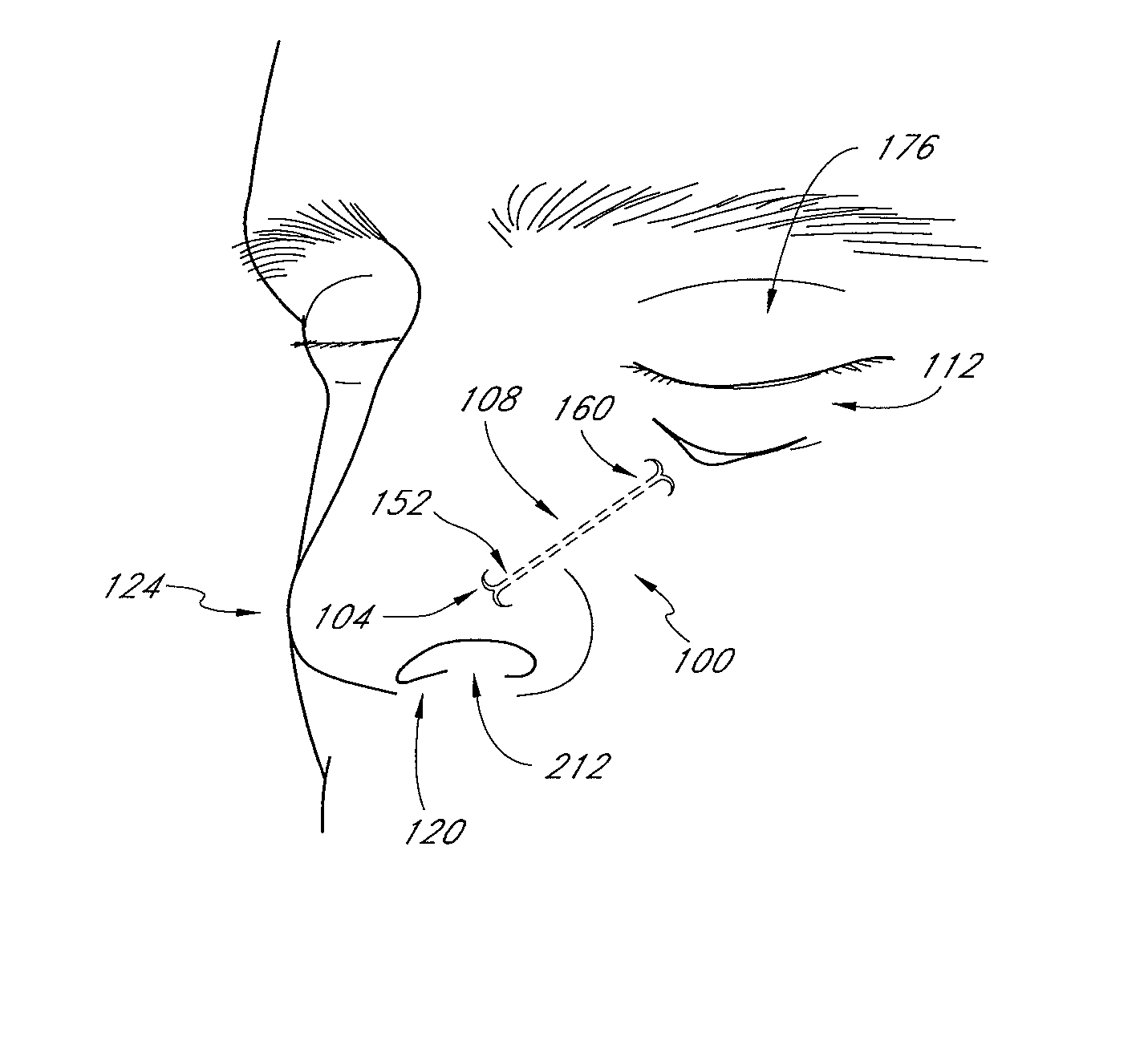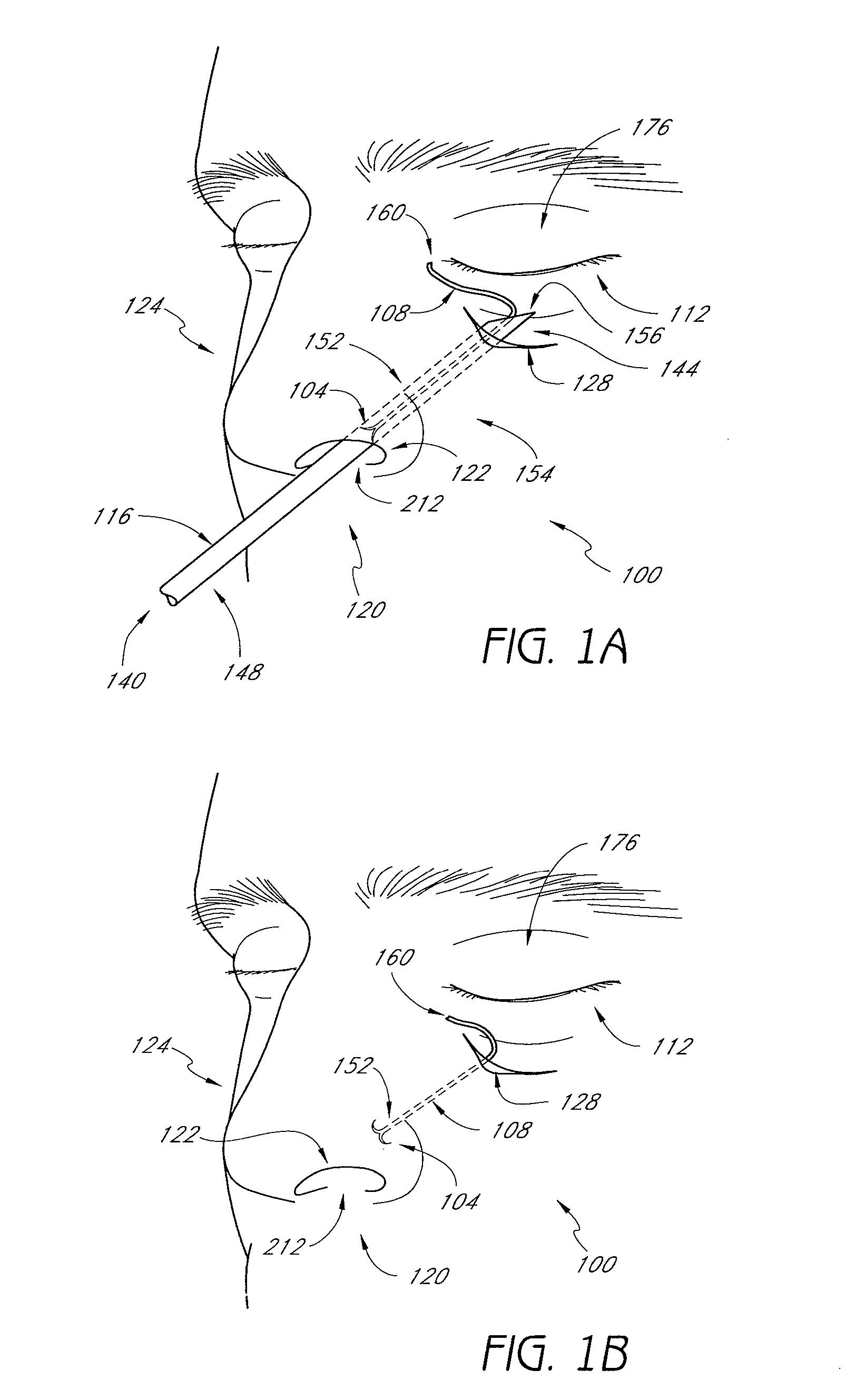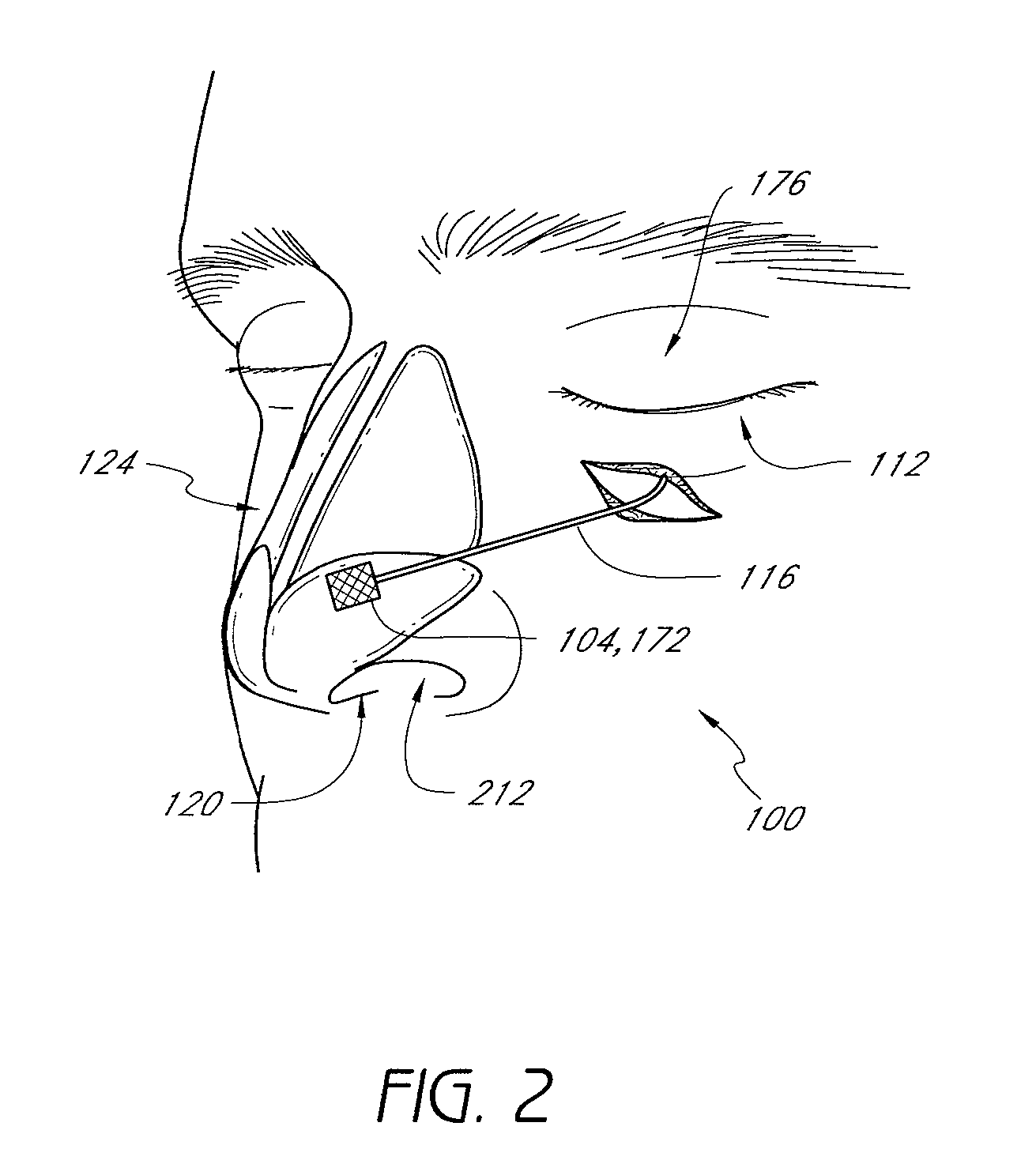Methods and devices for rhinoplasty and treating internal valve stenosis
a technology of internal valve and stenosis, which is applied in the field of rhinoplasty and treating internal valve stenosis, can solve the problems of affecting the rhinoplasty effect, so as to improve the cross-sectional area of the nose, and improve the rhinoplasty
- Summary
- Abstract
- Description
- Claims
- Application Information
AI Technical Summary
Benefits of technology
Problems solved by technology
Method used
Image
Examples
Embodiment Construction
Nasal Suspension
[0088]U.S. patent application, Ser. No. 11 / 349,067, filed Feb. 7, 2006, published as U.S. Patent Publication No. 2006 / 0207608 A1 on Sep. 21, 2006 and incorporated by reference in its entirety, describes methods and devices for manipulating the airway, as does U.S. Patent Publication No. 2006 / 0276817 to Vassallo et al., hereby incorporated by reference in its entirety, an article by David Nunez-Fernandez, M.D. et al., Rhinoplasty, Internal Valve Stenosis, available at www.emedicine.com / ent / topic115.htm, and an article by Michael Friedman, M.D. et al., Nasal Valve Suspension: An Improved, Simplified Technique for Nasal Valve Collapse, January 2003, available at www.chicagoent.com / pdf / Nasal_Valve_Simp1.pdf. Both of the articles are hereby incorporated by reference in their entirety. In some embodiments of the present invention, collapse of structures within the nose that form the passageways for airflow is treated by deploying a nasal suspension assembly 100 within the ...
PUM
 Login to View More
Login to View More Abstract
Description
Claims
Application Information
 Login to View More
Login to View More - R&D
- Intellectual Property
- Life Sciences
- Materials
- Tech Scout
- Unparalleled Data Quality
- Higher Quality Content
- 60% Fewer Hallucinations
Browse by: Latest US Patents, China's latest patents, Technical Efficacy Thesaurus, Application Domain, Technology Topic, Popular Technical Reports.
© 2025 PatSnap. All rights reserved.Legal|Privacy policy|Modern Slavery Act Transparency Statement|Sitemap|About US| Contact US: help@patsnap.com



